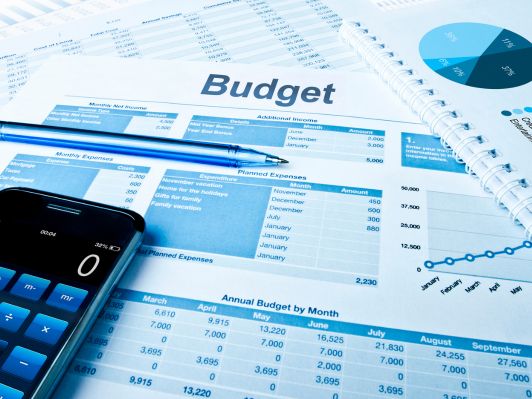The 50/30/20 rule is a common budgeting method to manage your finances. It allows you to allocate the spending categories in your personal or household budget. This budgeting strategy is divided in three categories. 50% for necessities. 30% for discretionary spending. 20% for savings and debt repayment.
This article thoroughly explores the 50/30/20 budget rule. And provides tips on implementing it successfully.
Table of Contents
50% for necessities
You can divide 50% of your monthly after tax income into your needs. You should spend no more than half of your income on essential expenses. These expenses must be necessary for your survival and well-being.
It includes expenses from different categories, such as:
- Housing: Rent or mortgage payments,
- Utilities: Gas and Electric, Council Tax, water, internet, etc.
- Food: Groceries, household supplies, and toiletries.
- Transportation: Car payments, gas, insurance, and maintenance costs.
- Healthcare: Health insurance, prescriptions, and other health care expenses.
- Debt payments: Minimum payments on credit card debt, payday loans, short term loans, and other debts.
You must be honest when allocating your income to the needs category. While a gym membership may be great for your health. Is it a want rather than a need? Instead of going to the gym, you can do other types of exercise.
A large house or expensive car may be desirable. But could a cheaper to run one do the same job?
Allocating 50% of income to needs ensures you have money for essential expenses. This saves you from overspending. It can help you avoid financial stress. It contributes towards your monthly targets. You can even save the extra money towards your individual pension.
30% for wants
Allocate 30% of your income towards wants. This means that you are dedicating a smaller portion of your available resources. Such as money, time, or energy, to things that are not strictly necessary for survival or basic needs. This includes entertainment, hobbies, travel, luxury items, and other non-essential expenses.
There are a few reasons why someone might choose to allocate 30% of their resources towards wants:
- Savings: Allocating a smaller percentage towards wants can help you save more money. Whether for emergencies or future goals. Prioritising your needs over your wants, can ensure you have enough money to cover basic expenses. And also put some money aside for the future.
- Responsibility: By dedicating a smaller percentage towards wants, you take responsibility for your financial situation. It helps ensure you are not overspending on unnecessary items. This can help you avoid debt and financial stress in the long run.
- Prioritisation: By allocating 30% towards wants, you prioritise your basic needs over your desires. This can help you stay focused on what is truly important. You can avoid impulse buying or overspending on things you don’t need.
20% for savings
Allocate 20% of your resources towards savings. This means dedicating a portion of your available resources, such as money, time, or energy, towards building a financial cushion for the future. This can include saving for emergencies, retirement contributions, pension fund, or other long-term goals.
There are a few reasons why someone might choose to allocate 20% of their resources towards savings:
- Emergency fund: Building an emergency fund is one of the most important reasons to save money. A cushion of savings can help you cover unexpected expenses. Be it medical bills or car repairs, without relying on credit card debt or loans.
- Retirement: Saving for retirement is essential to ensure you can live comfortably in your golden years. Allocating some of your resources towards pension savings can help you build a backup. This will support you when you’re no longer working.
- Long-term financial goals: Putting money into savings can also help you achieve long-term goals. Such as: buying a home. Starting a business. Or paying for your children’s education. By dedicating towards these goals, you can progress steadily over time and achieve financial independence.
Why do you Need a Personal Budget?

The purpose of creating a personal budget is to keep track of your spending. Be that shopping habits or income tax. This helps decide which expenses are necessary and which ones are optional. It helps create savings for larger expenses like holidays or provision for expenses after retirement.
There are free budgeting apps that can help you monitor existing debt and disposable income.
Methods of Personal Budgeting
50 30 20 budgeting method
This method divides expenses into needs, wants, and savings. 50% of the monthly income is allotted for needs, 30% for wants, and 20% for savings. This is also known as the balanced money formula.
Cash-only or envelope budgeting
This advice is about physically withdrawing money. Then splitting it into various envelopes based on your expenses. Expenditure for a particular purpose must only be made from the corresponding envelope. This will help control overspending across categories and help you stick to your budget.
Zero-based budgeting
In zero-based budgeting, you allocate every penny of your take-home income for something. So, in other words, your income precisely matches your account’s outflow. The excess income in your savings account will be considered consumption and will be budgeted accordingly.
The 60% budgeting method
This method suggests allocating 60% of your income towards all necessary spending. Categories like groceries, basic clothes, insurance, and utilities. The balance of 40% is divided into 4 equal categories of 10% each.
- Retirement/ultimate lifetime money plan
- Long-term savings in your savings account
- Short-term savings
- Fun money
Spending limit/Cap budget
As the name suggests, the spending limit or cap budget restricts what you can spend in a month. This restricted spending includes everything you want to put towards savings for the future or spend on routine expenses.
For example, if you are earning 5000 pounds a month, you may set your spending limit to 4500. Do so you don’t allow yourselves to use your money after the 4,500 pounds are exhausted.
How can the 50-30-20 rule save you more?
The most significant advantage of the 50-30-20 rule is it gives you a clear direction on how to live within your means and save more with proper money management.
Make adjustments
The 50-30 20 rule gives a picture that clarifies when you need to take charge of your bank account. For example, if you notice you are spending too much on groceries, you may consider buying groceries required for a few months at once and avail discounts.
You may also consider curtailing some of the impulsive purchases. 50 30 20 rule gives you this transparency in your spending patterns and helps you adjust accordingly.
Cut down your wants
If your expenses in the wants category are going beyond their assigned 30% level, it is an indication to keep a check on your spending patterns. Reduce the number of times you go out, party with your friends, order food or plan to purchase items that can be avoided, such as the iPhone.
A little bit of a change can have a significant impact on your spending patterns. Simple habits like making your coffee or cooking your food at home can add to huge savings over a considerable period.
A retirement bonus
You can skyrocket your savings without impacting the 50% and 30% categories if your employer has an employee retirement account or pension plan. Some employers match your retirement savings contributions, and you receive an automatic bonus.
Put more money aside
Savings are extremely important. Some monthly expenses can otherwise leave you struggling with bad debt. Look for ways to cut expenses and save more if you realise you are not saving sufficiently.
Pay your debts faster
After establishing the emergency fund, consider paying off credit card debts and other debts like cash loans, unsecured loans, etc., as quickly as possible. This will help you put more money aside for investments and savings for the future.
Final Thoughts
The primary aim of the 50-30-20 budgeting rule is to create a financial cushion. It provides for unforeseen emergencies and future retirement needs. The 50-30-20 rule is a popular and effective method for managing finances. It helps establish a clear and achievable financial plan.
This budgeting approach provides a balanced way to manage your money. It ensures you meet basic needs while enjoying life’s luxuries and saving for the future.
The principles of the 50-30-20 rule remain sound. But the exact allocation may vary depending on your personal financial goals. This helps you take control of your finances and achieve financial security.
You can build a solid financial foundation by sticking to this budgeting approach. This will help you achieve your long-term financial goals. But you’ll have to review and adjust your finances as needed.
Disclaimer: The information given above is provided for reference only. This is not financial advice.

